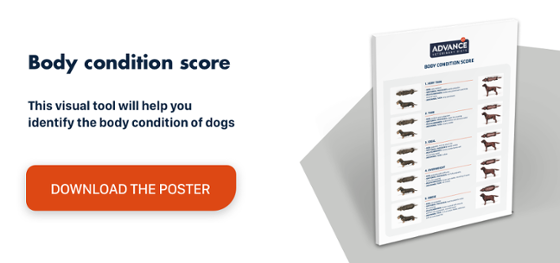What are the differences between light dog foods and diets for obesity?
Although owners do not always like to admit it, obesity is a disease in itself and should be treated with a specific veterinary plan. Pet owners often fall into the trap of believing that light dog food is enough to control their pet’s obesity.
Besides being a vet... do we also need to be a coach?
When dealing with obesity vets need to create an individualised plan for each dog that takes into account different energy needs, variations in physiological resistance to weight loss and the possibility of regaining weight that is lost.
However, a well-designed weight-loss programme is not enough, as veterinary surgeons must also ensure that the dog’s owner is motivated and that continuous monitoring and guidance is in place to encourage treatment adherence.
Several programmes have been especially designed to help vets calculate the target weight and ideal rate of weight loss and include step-by-step indications to achieving these goals. Affinity Petare offers Obesity Management, a free weight-loss programme with nutritional advice designed for weekly monitoring of several patients simultaneously.
One of the decisive factors when helping a patient lose weight is the choice of a good diet to ensure controlled and enduring weight loss. Let’s have a look at the key characteristics.
Why makes a good light feed for overweight or obese dogs?
Dietary intervention with a restricted energy intake is the only effective means of reducing a dog’s weight. A restriction of 25% not only reduces weight and body mass but also lowers serum triglycerides, triiodothyronine, insulin and glucose levels, all markers of ageing. Dietary interventions are even more effective when combined with physical activity, so owners are encouraged to increase their dogs level of exercise as part of the weight-loss programme.
However, a dietary intervention that simply reduces the amount of food is bad practice because it will not only fail to satiate the animal and actually increase its hunger, but it can also lead to deficiencies of essential nutrients.
The ideal solution is to use a special veterinary diet that:
- Addresses the feeling of fullness: by increasing the protein and medium-chain fatty acid content.
- Reduces energy density: by increasing the fibre content and reducing the amount of fat.
- Excellent palatability.
“Not all “light dog foods” give good results in the control of obesity. Correct management of the disease involves a veterinary diet and an individualised treatment plan.”
Which nutrients are important in a weight-loss diet?
Some of the nutritional strategies used in diets for obesity include:
- Increasing the water content and/or reducing the physical density of dry foods.
- Reducing high glycaemic index carbohydrates to help maintain control over blood glucose levels.
- Increasing the protein content to improve body composition by conserving lean mass. This is important in the long term, as energy expenditure depends on muscle mass. Protein also increases satiety. No studies to date have found that increasing protein intake leads to kidney problems in dogs.
- Omega-6/omega-3 fatty acids balance: a ratio of between 5 and 10 in dogs reduces the production of inflammatory mediators, which are characteristic of the proinflammatory state associated with obesity.
- Medium-chain fatty acids, such as coconut oil, increase energy expenditure, improve the sense of satiety and promote weight control when used as a replacement for long-chain fatty acids.
- High fibre content: lower energy density, delayed gastric emptying, slow nutrient absorption (soluble nutrients), larger food bolus (insoluble nutrients), increased satiety and helps reduce postprandial glycaemia in diabetes and lower blood lipids.
- Antioxidants counteract the oxidative stress caused by obesity which can trigger concomitant diseases.
- L-carnitine: contributes to fatty acid oxidation in the mitochondria, accelerating the loss of excess weight and fat mass.

